Tales from the crypts: Elmwood Cemetery stories
By Vivian M. Baulch
With thy rude plowshare, Death turn up the sod,
and spread the furrow from seed we sow;
This is the field and acre of our God,
This is the place where human harvest grow.
--Longfellow

A walk through Elmwood Cemetery on Detroit's near east side is a walk through 150 years of history and mysterious legend. The names on many of the 54,000 markers are names that still live on maps, building cornerstones and in our children's history books. Buried here are 28 Detroit mayors, 11 U.S. senators, seven Michigan governors, 28 Civil War generals and 15 black veterans of that war.
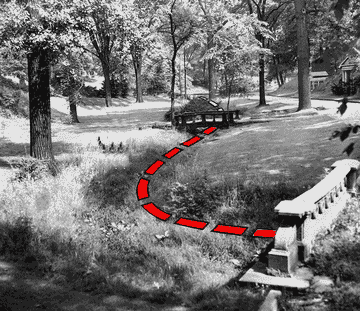
But what of the others? Enter through the elaborate main gate, and you will learn of famous lives lived, tall tales and intriguing questions unanswered.
As you wander, you will find the grave of Richard "Maserati Rick" Carter, a notorious drug dealer who ordered for himself a $16,000 coffin with a Maserati grill and four tires, lies here, although the grill and tires had to be removed for burial. Surely he was no more single-minded than John Blessed, one of the last stage coach drivers in the state, and Helen Newberry Joy, who refused to concede to the internal combustion engine and drove her electric car from 1914 to 1958. You will find their graves here as well.
And you will learn of Bloody Run.
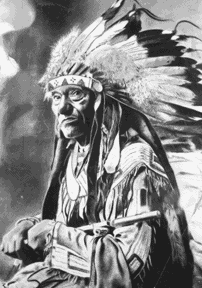
Small animals may find refuge in the green banks of an innocuous looking quiet stream, but this is a stream that once ran red with the blood of British soldiers. In 1763, Chief Pontiac of the Ottawa Indians, abandoned by other chiefs in his attempt to create united uprising against the British, decided to go it alone and launch an attack with his own band.
Pontiac and 250 of his men hid in the trees near a bridge over Parents Creek. The creek flowed from a swamp at what is now Gratiot and Moran to the Detroit River near Adair Street, passing through the land that later became Elmwood Cemetery. When the British approached the bridge, they were cut to pieces by a solid sheet of fire from Pontiac's hidden braves.
Various accounts of the battle list redcoat casualties at 60 to 160 killed. The creek ran red with blood for days.
None of the hapless Brits are buried here, because the cemetery did not exist at the time of the battle. But there are plenty of other tales from to savor from the Elmwood crypts.
The Veiled Lady
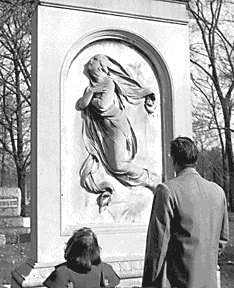
When Joshua Waterman's wife died, he commissioned world famed scuptor Randolph Rogers, a native of Ann Arbor, to carve a 12-foot Carrara marble bas-relief in 1876 as a memorial. It is a mesmerizing piece, with a woman who appears to be neither in heaven nor in earth, but somewhere in between, her face covered with a delicate veil that seems to float on the wind of her urgent flight. Is she trying to tell us something? Is she resisting her plight? The history of the gravestone's passage feeds the lore. Created in Italy, the sculpture was shipped from Rome but lost at sea when the ship sank near Spain. It was salvaged two years later, only to fall off another ship on the Hudson River.
Retrieved again, it was finally put in place at Elmwood, but toppled and broke during a fierce storm in 1919. Reassembled but flawed, she seems more an enigma than ever.
The Merry Widow
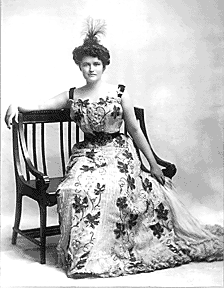
George Hammond had a butcher shop in Detroit -- corner of Howard and Third -- in the 1800s. His invention, the refrigerated railroad car, made him so wealthy that the city of Hammond, Ind., bears his name. He died in 1883 and was buried in Elmwood Cemetery.
In 1900, his son Charles Hammond married Juliet Klous, a vivacious beauty and the darling of Detroit society. She was a charming woman, fluent in many languages, who soon became the toast of the town. Unable to live with what she called her tightfisted husband's "stinginess," she divorced him in 1924. The Michigan Supreme Court, however, disallowed the divorce.
Mrs. Hammond's luck changed after her husband's death. Her status as his widow allowed her to claim a third of his considerable estate, and in 1936 she won $75,000 in the Irish Sweepstakes. She traveled in high circles, commiserating with her good friend and divorcee Wallis Warfield Simpson, the Duchess of Windsor.
Final Curtain
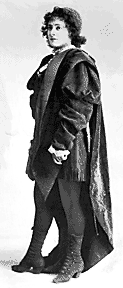
Margaret Mather Findlayson rose from hawking newspapers on Griswold Street in Detroit to become one of the world's leading Shakespearean actresses in the late 1800s. She was famed on the world's stages for playing Juliet, Rosalind, Lady MacBeth, Imogene and Cymbelind.
Actor Otis Skinner called her "a chaos of beauty, fancy, ambition, sympathy, generosity, all ill-adjusted and treading upon the other's heels."
Suffering from a chronic illness, she died as dramatically as she lived -- on stage during a performance.
She was buried on Easter Sunday, 1898, in a white gown -- her costume from her role as Juliet. Thousands of bereaved fans listened as Jessie Bartlett Davis sang the eulogy, then mobbed her fresh grave for souvenir flower petals.
War and Peace
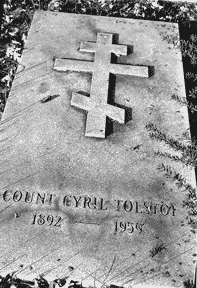
Count Cyril Petrovich Tolstoi, the grandson of the great Russian novelist Leo Tolstoy, was an officer in the Czar's Horse Guards and joined the Cossacks against the Bolsheviks during the Russian Revolution. He was a child of privilege, born at the Czar's summer palace, the inheritor of titles granted to his family by Peter the Great.
When the Bolesheviks prevailed, Tolstoi fled to the U.S., where he married a Seattle heiress and then, in 1927, divorced her. His marriage to Gwendolyn Seyburn, a Grosse Pointe divorcee, brought him to Detroit during the Depression, and eventually, to a plot of earth at Elmwood.
The cemetery is also home to Robert Forsyth, a fur agent for John Jacob Astor who lived among the Potawatomi Indians and interpreted treaties for them; mining magnates Douglas and Jacob Houghton, for whom the northern Michigan lake and town were named; Samuel Zug, of Zug Island fame; and historians Silas Farmer and George W. Stark.
Information gathered from the Detroit News Reference files, and from the book Elmwood Endures: History of a Detroit Cemetery by Michael S. Franck.
